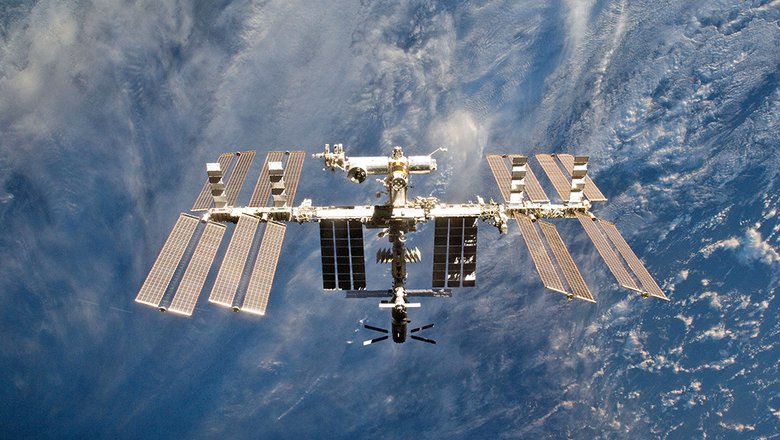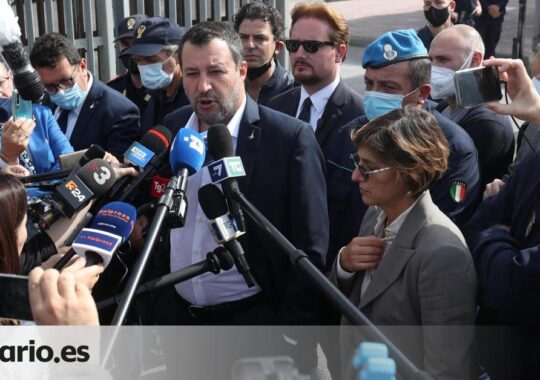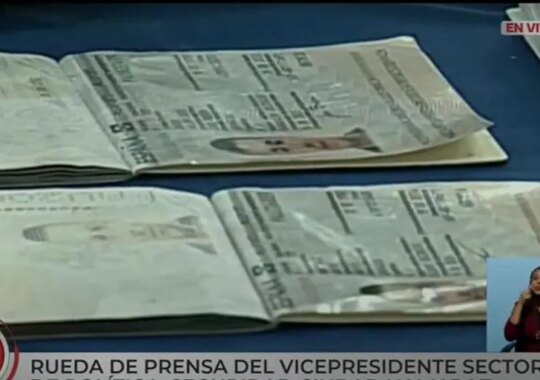
A coolant leak from the external radiator circuit, which occurred on October 9 on the Nauka module of the Russian segment of the ISS, did not lead to serious consequences, Roscosmos assured. The temperature at the station is comfortable, the crew continues training, and experiments did not have to be postponed. Experts note that there may be several reasons for an emergency situation: a micrometeor impact, mechanical damage, and even the actions of astronauts. What exactly happened from a technical point of view, the expert group of the state corporation has yet to find out. However, experts say that in the future there will be no fewer breakdowns due to the impressive service life of the station. Moreover, they can occur in both the Russian and American segments.
Another accident
A coolant leak from the external (backup) radiator circuit of the multipurpose laboratory module “Nauka” of the Russian segment of the ISS did not affect the life of the crew, no experiments were postponed, the deputy head of the Cosmos Cosmos Center reported in the official Telegram channel of Roscosmos. Yu. A. Gagarin, commander of the cosmonaut corps Oleg Kononenko. According to him, now the temperature at the station is comfortable, the cosmonauts were not prohibited from exercising on the treadmill, and all exercises were completed in full.
“The main thermal control circuit of the module operates normally and provides comfortable conditions in the living area of the module. The crew and the station are not in danger. The work of the main operational group of the department continues to analyze the current situation,” stated the official statement of the state corporation.
On the evening of October 9, it became known that the Nauka module had a coolant leak from the external radiator circuit, which was delivered to the station in 2012.
NASA specialists were the first to report the accident in a broadcast. “We see flakes outside the station, we need one of the crew to go to Cupola (module of the American segment of the ISS – Izvestia), look towards the rear part of the station, through windows 5 or 6, and confirm whether he sees any flakes,” said the NASA specialist.
“Yes, there is a leak from the radiator on the Science module,” said NASA astronaut Jasmine Moghbeli, who is currently on the station.
On December 15, 2022, a depressurization of the external circuit of the cooling system occurred on the Soyuz-22 spacecraft in the Russian segment of the ISS.
The current situation at first glance is similar to the problem with the Soyuz, when the radiator of the thermal control system was damaged, Nathan Eismont, a leading researcher at the Space Research Institute of the Russian Academy of Sciences, told Izvestia. Then it was concluded that this was due to a meteorite impact (although it could have been a fragment of space debris).
— Let me remind you that a millimeter-sized particle is enough to damage the thermal control system. There are more than one hundred thousand such particles in the near-Earth space. By the way, due to the onset of maximum solar activity, the flow of particles coming from above into the layers of the atmosphere where the ISS flies has increased significantly. “Maybe we are seeing the consequences of this phenomenon,” the scientist emphasized.
According to him, so far the information about what happened is very incomplete. It talks about problems with the external circuit of the system. It is difficult to say now how much it will be possible to cope with thermal regulation in the module when the system characteristics decrease.
Space refrigerator
The task of the additional radiation heat exchanger is to dissipate excess heat generated during the operation of scientific equipment located on universal workstations (racks for scientific equipment) inside the Science module. The principle of operation of a radiator is the same as that of a conventional refrigerator: using liquid circulating through tubes, it takes heat from hot spots and removes heat into outer space. Without the operation of an additional radiation heat exchanger, the amount of heat discharged from the Nauka module will be reduced by a third, a source close to Roscosmos told Izvestia.
— In such a situation, you can panic, because this indicator does not provide the normal temperature regime for the operation of the Nauka module as part of the station, that is, it will be hot there. However, these are calculations for the maximum load of the module with working scientific equipment,” the source said. “In reality, due to the fact that the module was being prepared for launch for a long time, the scientific equipment that they wanted to supply earlier is outdated, and the new one is either waiting for launch or is still in production.
Considering that there is currently little scientific equipment in the module, the shortage of heat removal is not so bad. And the standard system for providing thermal conditions copes with everyday needs, Izvestia’s interlocutor emphasized.
If we talk about the causes of the damage, then we need to wait for photographs or video recording, which they will try to do with the help of manipulators available at the station, interviewed experts are sure. This could be a micrometeoroid or space debris breaking through the radiator.
The reason may be so-called “metal fatigue” (the radiator spent 13 years in space) or mechanical damage, the source emphasized. According to him, the radiator consists of three sections, which are connected by flexible tubes. What happened to them during this time in space and how they survived deployment in May 2023 is unknown, although mechanical damage, naturally, would have appeared immediately.
Avalanche exit
Another version expressed by the source is that the damage could have been caused by the actions of the astronauts during installation (a small impact that led to the formation of a microcrack, and it, in turn, could expand under internal pressure and the heating and cooling cycle in space).
“In the end, nothing terrible happened; this breakdown does not pose a danger to the crew and the operation of the station. They will find out the reason and will think about ways to repair it. However, let me remind you of the words of the flight director of the Russian segment of the ISS, Hero of the Soviet Union Vladimir Solovyov, said several years ago at a meeting of the Russian Academy of Sciences Council on Space: “After 2025, we predict an avalanche-like failure of numerous elements on board the ISS,” the source emphasized.
Accordingly, every year more and more similar situations are possible on the ISS – this is confirmed by reports from the Cosmonaut Training Center, the source noted.
— The amount of time that the Russian crew spends servicing and repairing the station is becoming more and more. At one time, Vladimir Yaropolov, a researcher at the Center, deduced a pattern: the larger the station, the more cosmonauts are busy with its maintenance, and not with science. We superimpose the size of the station with its service life and see that it’s simply time to think about replacement,” he said.
In addition, as space expert Ilya Ovchinnikov noted, accidents also regularly occur on the American segment. For example, in 2016, a toilet in the American segment broke down, in 2017 there was an ammonia leak with cereal, and in 2020 the situation with ammonia repeated itself.



